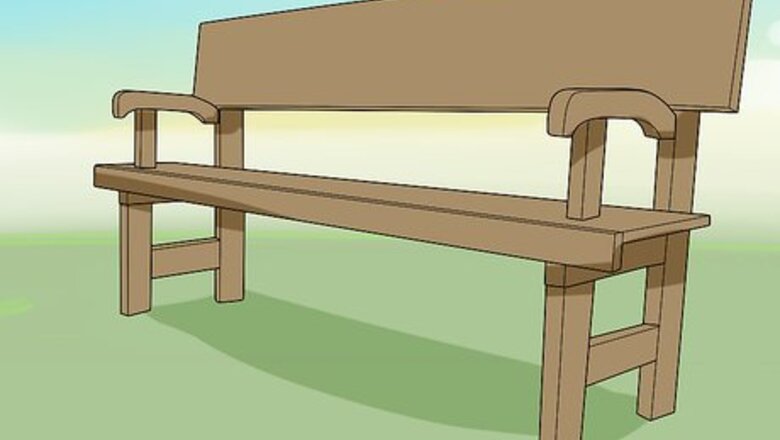
views
Choosing a Material
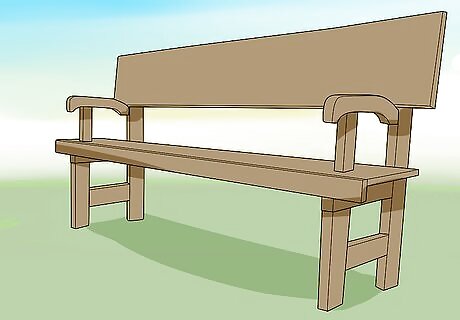
Go with a natural wood bench. If your goal is to spruce up a beautiful outdoor setting, it’s hard to go wrong with the warmth and allure of natural wood. Woods like acacia, cypress and teak are among the best outdoor options, as their resins make them naturally resistant to water and insects. Wicker is another popular choice. When properly maintained, a well-selected wooden garden bench can last for decades. Opt for lightweight woods like cedar if you think you’ll be moving or rearranging your bench often. Treating your wooden bench with a protective stain or clear coat can help preserve its natural color and prevent warping, splintering and decay.

Pick out a durable metal bench. Benches of metal construction can be sleek and modern or boast an element of classic elegance, as with traditional wrought-iron. Look for sturdy designs that are able to withstand exposure to the elements. Perhaps best of all, you’ll never have to worry about a metal bench splintering or wearing out. Metal benches are typically designed to prevent rust and discoloration.
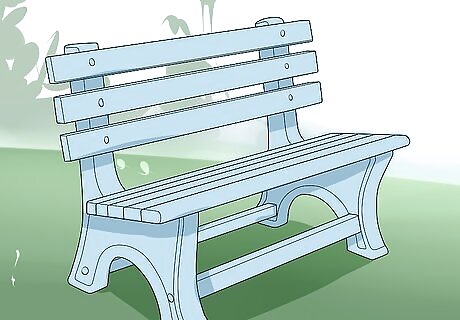
Save time and money with a plastic bench. Assuming your budget doesn’t permit an elaborate wrought-iron or redwood bench, you can still outfit your garden in style by picking out synthetic seating. A plastic bench will be lightweight, waterproof and, above all, affordable, meaning replacing it after a few years won’t be a financial hassle. Many of these benches are molded as a single piece or come pre-assembled, so no complicated building is required. Top-end synthetic benches are often woven together to look like wicker, making them a more tasteful possibility for those who aren’t willing to sacrifice style.

Install a picturesque stone bench. If you prefer a classic approach, a stone bench may be the thing for you. Depending on your price range, you can find stone benches made of everything from marble or granite to molded concrete. A stone garden bench imparts a sense of idyllic beauty, looking like it leapt off the pages of a storybook. Make sure you have the right spot picked out for a stone bench before having it brought in. They’re extremely heavy and difficult to move. Stone benches are essentially no-maintenance, which is ideal for people who don’t want to have to do a lot of cleaning and storing.
Finding an Attractive Design
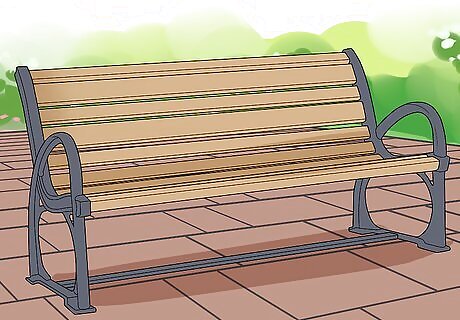
Match the look of your bench to the look of your garden. Garden benches come in a nearly endless variety of shapes and sizes. As you’re browsing different models, imagine how it would look as the centerpiece of your outdoor space. In the end, trust your instincts and go with what you like most. The basic style of your bench should reflect your unique outdoor space and individual sensibilities. An ergonomic bench with an aluminum frame, for instance, would seem out of place in a garden full of dazzling flowers, but will be right at home in an extended patio. If you’re not happy with any of the models you look at, consider having a custom bench built to your own specifications.
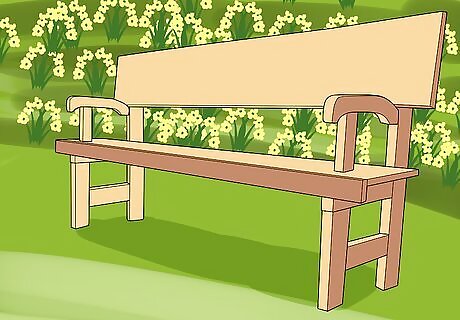
Use color to make a statement. The color of your bench will also influence how it looks among your garden. Natural wood benches will blend with their surroundings for a serene, outdoorsy effect, whereas plastic and metal benches can create a pleasant contrast that defines your garden as a stylishly contemporary space. Get as bold or as understated as you please, using the general aesthetic of your garden as the principal reference. Look for materials and shades that won’t clash with the colors of the plants growing around them. To ensure that your bench stands the test of time, keep the most vibrant colors confined to cushions and other subtle accents.
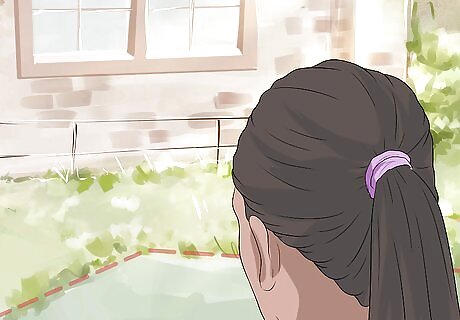
Take size into account. Put some thought into the purpose your garden bench will serve. Should it provide spacious seating for outdoor get-togethers? Or is more ornamental than functional? Review the layout of your garden and settle on a bench that’s the right size to complement the space you have without dwarfing it or being swallowed up. Determine how many people are likely to be sitting at one time. Be aware of how big nearby plants are likely to grow so that your bench doesn’t end up competing for room in your garden.
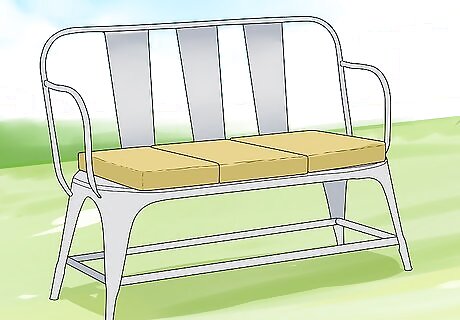
Add some weather-resistant cushions. If you plan on spending a lot of time relaxing on your bench, it may be worth it to invest in a set of decorative cushions or pillows. Make sure the accessories you buy are rated for the outdoors and made from waterproof synthetic materials. Cushions can offer enhanced comfort as well as a little something for the eye to linger on. Even weather-resistant cushions will need to be brought inside during heavy downpours or inclement winter weather. Wipe outdoors cushions clean with a simple wet washcloth, or use a stiff-bristled brush to remove set-in dirt and stains.
Arranging Your Garden Bench

Line a short path or walkway. A small bench can make an outstanding feature for gardens that are configured to promote foot traffic. Following a stroll through your outdoor sanctuary, you or your guests will have a convenient place to take a seat. This will give you a chance to rest and appreciate the beauty of your surroundings. Make room for the bench among taller shrubs and trees to give yourself more privacy.
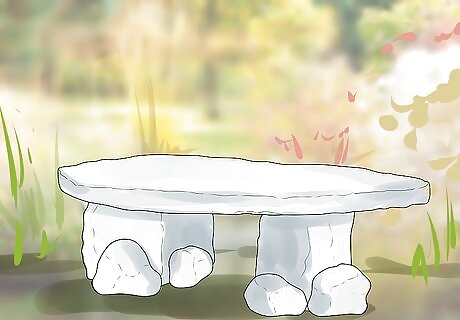
Fill in negative space. If your garden is spread out or part of an open yard, strategically positioning a large bench can bridge disconnected flower beds and cover tracts of ground where nothing grows. It will also make the area appear more neatly organized and add visual depth, breaking up long stretches of grass and dirt. Find a place for your bench somewhere with a scenic view, whether it’s a rose bush in full bloom or a faraway mountain vista. Combine a garden bench with other decorative accents, such as a fountain, bird feeder or latticed archway.
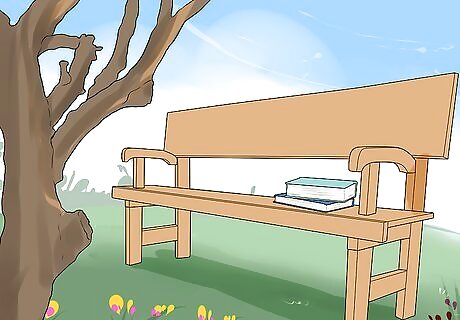
Create a cozy reading nook. Turn your backyard into a private wilderness haven. Nestle a wooden or plastic bench in a secluded corner of the garden where you can relish a moment of quiet solitude. You can seek shade under a tall tree, or immerse yourself in the breathtaking color of blossoming flowers. Benches with built-in backs will allow you to sit upright more comfortably. Layer the bench with soft cushions to make your private getaway more luxurious.
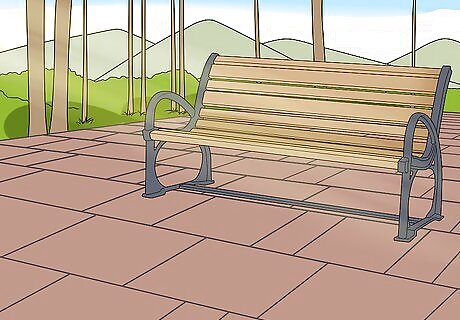
Get out in the sun. Rather than retreating into the inner reaches of your garden, place the bench right out in the open and take advantage of warm, sunny weather. From your position of leisure you’ll be able to soak up a few rays or sit and watch the kids play all afternoon. If you’ve been looking for a reason to get outside more, this is it. Ample sunshine will also help keep wood and metal benches dry, reducing the risk of rot and rust. Pair your garden bench with an outdoor coffee table where you can set a pitcher of ice cold lemonade or some snacks.















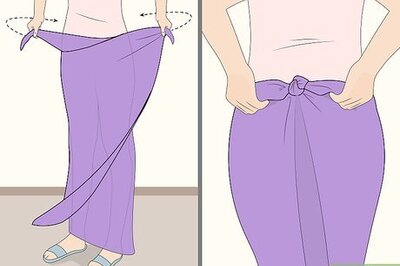




Comments
0 comment